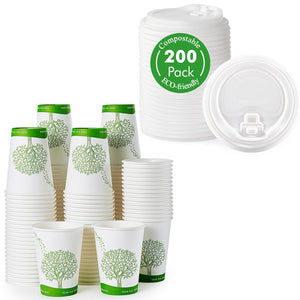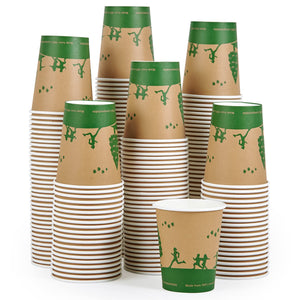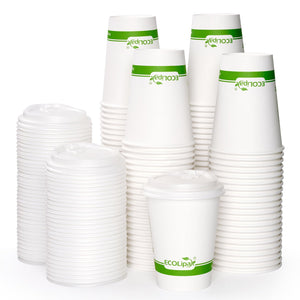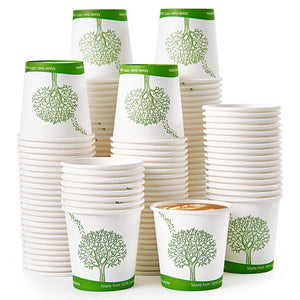So, can you microwave paper cups? For your safety, the answer is almost always no. It is not a safe practice.
A standard paper cup is not a safe container for your microwave. Most cups, which are 90-95% paper, contain a plastic lining that is not safe for a microwave. This creates serious risks. To be safe, you need a truly microwave safe option. Asking can you microwave paper cups is smart; making a safe choice is vital. It is not safe. Be safe. Stay safe.
The primary dangers include:
-
🔥 Fire from adhesives or the paper itself.
-
🧪 Chemical leaching from the melting plastic lining.
-
💧 Structural collapse leading to severe burns.
Key Takeaways
-
Do not microwave paper cups. They can catch fire, release harmful chemicals, or fall apart.
-
Standard paper cups have a plastic lining. This lining can melt and put bad chemicals into your drink.
-
Always use glass or ceramic mugs to reheat drinks. These materials are safe for the microwave.
-
Look for a 'microwave safe' symbol on containers. This symbol tells you if a container is safe to use in the microwave.
The Dangers of Microwaving a Paper Cup
You might think a quick trip in the microwave is harmless. However, putting a paper cup in the microwave is not a safe practice. The heat from your microwave creates several serious risks that make this convenient habit a dangerous gamble. Understanding these dangers will help you make a safe choice every time you need to reheat a drink.
Fire Hazards
The most immediate danger of using a paper cup in the microwave is fire. You might not see them, but several parts of a standard paper cup can ignite under intense microwave heat.
-
Adhesives: Manufacturers use glue to hold the seams of the cup together. This adhesive can overheat in the microwave, smolder, and catch fire.
-
Metal Components: Some cups, especially older designs, may have a hidden metal staple in the seam. Any metal inside a microwave can cause sparks and quickly start a fire.
-
The Paper Itself: Extremely high temperatures can cause the paper to become superheated and ignite, especially if the liquid inside evaporates. A dry paper cup is a definite fire risk in a microwave.
Safety Tip: Never put anything in your microwave that is not explicitly labeled as microwave safe. It is the only way to be sure your container is safe for heating.
Chemical Leaching
Beyond the fire risk, a significant health concern comes from the cup's lining. Most single-use cups have a thin plastic coating to prevent leaks. This lining is usually made of polyethylene (PE), a plastic that is not designed for the microwave.
When you expose this plastic to microwave heat, it can melt and break down. This process releases tiny plastic particles (microplastics) and other chemicals directly into your beverage. Scientific studies show that all plastic products can leach chemicals, and the risk increases with heat. Research has even found that chemicals from plastics like low-density polyethylene (LDPE) can cause toxic effects in lab tests.
Ingesting these chemicals is not safe. A recent study found polyethylene in the artery plaques of patients, linking the presence of microplastics to a much higher risk of heart attack, stroke, or death. This makes the question "can you microwave paper cups" a serious health matter. For a truly safe experience, you should always use materials that do not leach chemicals.
Here is a simple comparison of common materials:
|
Material |
Microwave Safety |
Chemical Leaching Concerns |
|---|---|---|
|
PE-lined Paper Cups |
Generally No |
Plastic lining can break down, releasing harmful chemicals like BPA, microplastics, and other toxins. Risk increases with heating. |
|
Glass |
Microwave-safe |
Will not leach harmful chemicals into your drink. |
|
Ceramic |
Microwave-safe |
Will not leach harmful chemicals into your drink. |
Structural Failure
The heat and steam generated inside a microwave can destroy a paper cup's structure. The paper walls absorb moisture and become soft and weak. The glue holding the seams together can also fail under the intense heat.
This structural failure can happen suddenly. You might reach into the microwave to grab what looks like a normal cup, only for it to collapse or leak. This can cause a scalding hot liquid to spill onto your hands, arms, or body, leading to severe burns.
Hot beverages are a leading cause of scald burns, especially among children. A weak paper cup makes this risk much higher. As you can see, coffee and tea are responsible for a significant number of these painful injuries.
Ultimately, using a container not designed for the microwave is never a safe bet. The risk of fire, chemical exposure, and painful burns is too high.
Eco-Friendly Cups: A Safer Alternative?
With the risks of standard cups clear, you might look for a better option. Many people turn to eco-friendly products. Brands like Ecolipak focus on creating sustainable solutions for everyday life. But does "eco-friendly" automatically mean it is safe to reheat in a microwave? Let's explore the materials to find a safe answer.
Understanding PLA Linings
Many eco-friendly cups use a lining made from Polylactic Acid (PLA). PLA is a bioplastic derived from renewable plant sources like corn starch. The production process starts by turning the starch into sugar. Bacteria then ferment this sugar to create lactic acid. Finally, these molecules are linked together to form the polymer, PLA.
This plant-based origin makes PLA a safer choice for you and the planet. It is free from harmful chemicals like BPA. The FDA confirms pure PLA is safe for food contact. This makes it a great material for holding your drinks. You can feel confident using a cup with a PLA lining. It is a safe material for its intended purpose. However, its safety depends on temperature. PLA begins to soften around 140°F (60°C). This is an important fact when you want to reheat a beverage. Using it correctly is key to a safe experience.
Ecolipak's Compostable Cups
Ecolipak offers a fantastic example of a more sustainable choice with its 12 oz Compostable Paper Coffee Cups. This paper cup uses a PLA lining, making it 100% compostable in an industrial facility. It is a safe and responsible way to enjoy your drinks.
So, is this the safest paper cup to reheat in a microwave? The answer is still no. While these cups are a safer choice for cold or hot drinks, they are not designed for the extreme heat of a microwave. The manufacturer's guidelines are clear: do not put this paper cup in the microwave. The intense energy from a microwave can cause the PLA to warp. This could compromise the cup's structure. You should never reheat any liquid in this cup using a microwave.
Important Safety Note: Even the best disposable cups have limits. To safely reheat your drink, always pour it into a glass or ceramic mug. These are truly microwave safe containers. It is the only way to safely reheat your beverage in a microwave. Answering the question "can you microwave paper cups" with caution is the most safe approach. You should never reheat in a paper cup in the microwave. The safest way to reheat is in a different container.
How to Know if a Cup is Microwave Safe
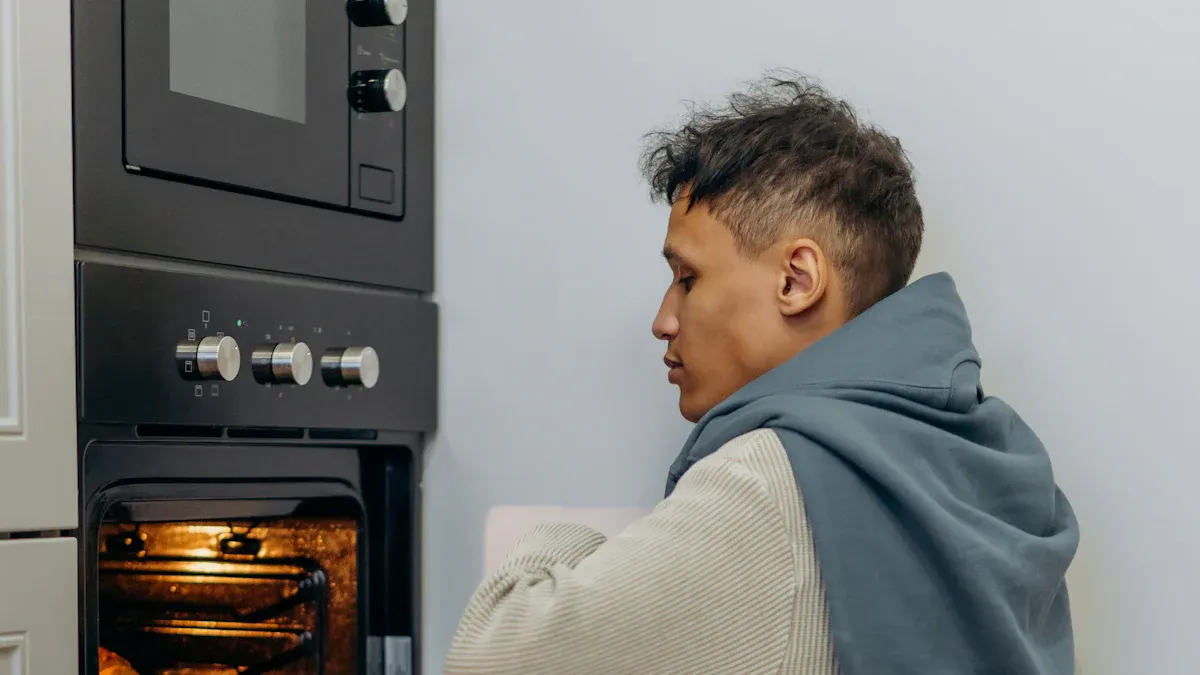
You know the dangers of microwaving the wrong container. Now, you need to learn how to identify what is safe. Making a safe choice is simple when you know what to look for. This guide will help you safely reheat your food and drinks every time.
Look for the Symbol
The easiest way to know if a container is safe for the microwave is to check for a microwave-safe label. Manufacturers use a special microwave safe symbol to show a product can handle the heat. You can usually find this symbol on the bottom of the container. It often looks like a microwave with wavy lines inside or just a few wavy lines by themselves.
The U.S. Food and Drug Administration (FDA) oversees items labeled as microwave safe. The agency ensures any packaging for food is suitable for its intended use. This means the material should not release harmful substances into your food.
Here are some common symbols you might see:
|
Symbol Variation |
Appearance |
Meaning |
|---|---|---|
|
Wavy Lines Only |
Three wavy horizontal lines. |
The item tolerates microwave heat without melting. |
|
Microwave with Waves |
A microwave outline with waves inside. |
The item is explicitly safe for microwave oven use. |
|
Dish with Waves |
A bowl or dish icon with waves above it. |
The container is safe to hold and reheat food. |
|
Text Label |
The words "Microwave Safe" printed on it. |
The manufacturer confirms the item is safe for the microwave. |
Using microwave safe paper bowls or microwave safe paper plates with these symbols is a good way to reheat food. Always check for the microwave-safe label to be sure.
When in Doubt, Don't
If you cannot find a microwave safe symbol, the safest action is to not put the container in the microwave. This rule is especially important for plastics. Consumer safety groups advise against heating food in plastic containers in the microwave. Heat can cause chemicals to leak from the plastic into your food. This simple motto will keep you safe: when in doubt, throw it out—or in this case, keep it out of the microwave. This applies to that single-use paper cup, too. A container without a clear microwave safe label is a risk you should not take to reheat your food.
Best Practices for Reheating
Following best practices ensures you can safely reheat your food and drinks. Your health is worth the extra step.
Pro Tip: Always transfer your beverage or food to a container you know is microwave safe, like glass or ceramic. This is the most reliable way to reheat anything in a microwave.
Here are some safe habits for your kitchen:
-
Always use microwave safe paper bowls or microwave safe paper plates for solid food.
-
Pour liquids into a glass or ceramic mug to reheat them.
-
Use microwave safe paper for covering food to prevent splatters.
-
Never reheat food in single-use plastic containers or any paper product not marked as safe.
These simple steps help you enjoy a warm meal or drink without any risks. Using microwave safe paper and other approved containers is the best way to use your microwave. You can confidently reheat your food with these microwave safe paper bowls and microwave safe paper options.
So, can you microwave paper cups? The safe answer is no. You should never reheat a standard paper cup in the microwave. A safe reheat is a smart reheat. The most safe way to reheat your drink is to transfer hot liquids into a glass or ceramic mug. These containers are truly microwave safe. Choosing sustainable options like Ecolipak's compostable cups is a great, safe step for the planet. Proper use ensures a safe experience. To safely reheat, always use a different container in the microwave. A safe reheat is a happy reheat. Be safe, reheat safe.
Green Pack, Go for ECOLipak.
FAQ
What is the safest way to reheat coffee?
The safest method is to pour your coffee into a ceramic or glass mug. These materials are truly microwave safe. This simple step ensures a safe reheat experience every time. Using a microwave-safe container is the only completely safe way to reheat your drink.
Are any paper products safe for the microwave?
Yes, some paper products are safe. You should look for items explicitly labeled "microwave safe." These microwave-safe products, like certain paper plates, are designed to handle heat. Never assume a product is safe without checking for the official safe symbol.
Can I reheat food in a paper cup?
You should not reheat food in a standard paper cup. The cup can fail, and its lining may release chemicals into your food. For a safe meal, always transfer your food to a glass container or a microwave-safe dish to reheat it.
Quick Tip: A safe kitchen is a happy kitchen! Your best choice is always a container you know is microwave safe. This is the most safe and reliable way to reheat anything.




